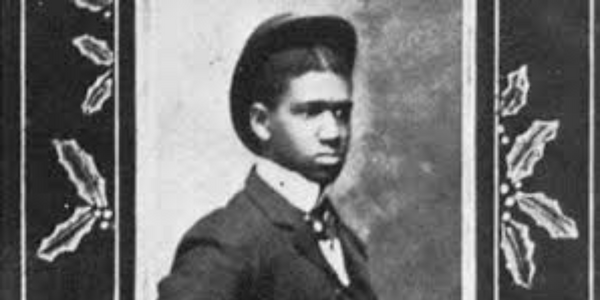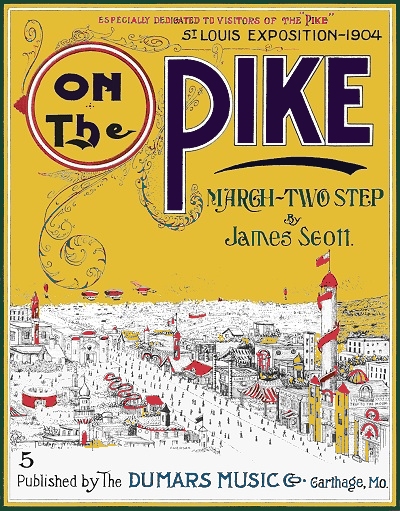
THIS WEEK IN PIANO HISTORY, we celebrate the birth of major ragtime composer James Sylvester Scott who was born on February 12, 1885. Scott produced a number of hits including Ophelia Rag, Frog Legs Rag, and Grace and Beauty.
Originally from Neosho, Missouri, Scott was born to former slaves James Scott Sr. and Molly Thomas Scott. His musical upbringing began on his own as he learned to play piano by ear, but later studied with teacher John Coleman and continued as he watched and gave performances at Lakeside Amusement Park.1 These experiences helped him to improve his musical abilities and, because of this, he was hired by the Dumars Music Company to work as a sales clerk and perform his own music to demonstrate the instruments.2


While working for the Dumars Music Company, Scott was able to publish several of his own pieces including works such as On The Pike March. Upon meeting fellow ragtime composer Scott Joplin in St. Louis, he was introduced to Joplin’s publisher John Stark.3 After this introduction, Scott published a number of rags throughout 1906–1922, making him a leading composer in this style next to figures such as Scott Joplin.
Although similar in nature to Scott Joplin, James Sylvester Scott is an important and noteworthy composer in his own right. One of the most interesting features of Scott’s rags is his use of increasingly colorful and chromatic harmony. In Victory Rag, Scott uses half-diminished and fully diminished chords to great effect. Scott was concerned about balance in his music and carefully balanced the sections of the rags to create symmetry in phrase lengths. His music contains many virtuosic elements including arpeggios, thick chordal textures, and octaves. Want to hear one of Scott’s most famous compositions? Check out this recording of Ophelia Rag performed by pianist Fred Sturm.
Around 1920, Scott moved to Kansas City where he established his own teaching studio, performed in silent films and pit orchestras, and even performed with a dance band. His activities in Kansas City helped him to become one of the most important Black pianists there.4 After the death of his wife, Nora Johnson, in 1930, Scott continued to teach and perform until his death in 1938.
If you are curious about including ragtime in your studio, read Meg Gray’s article, Pupil Saver: First Steps into Ragtime, to learn about this style via the music of Florence Price.

Sources
- Peter Muir, “Scott, James Sylvester,” Oxford African American Studies Center, 31 May. 2013; Accessed 20 Jan. 2023, oxfordaasc-com.uc.idm.oclc.org/view/10.1093/acref/9780195301731.001.0001/acref-9780195301731-e-37819.
- John Edward Hasse, “Scott, James,” Grove Music Online, 2001; Accessed 20 Jan. 2023, oxfordmusiconline-com.uc.idm.oclc.org/grovemusic/view/10.1093/gmo/9781561592630.001.0001/omo-9781561592630-e-0000025252.
- Ibid.
- Peter Muir, “Scott, James Sylvester,” Oxford African American Studies Center, 31 May. 2013; Accessed 20 Jan. 2023, oxfordaasc-com.uc.idm.oclc.org/view/10.1093/acref/9780195301731.001.0001/acref-9780195301731-e-37819.
Hasse, John Edward. “Scott, James.” Grove Music Online. 2001; Accessed 20 Jan. 2023. oxfordmusiconline-com.uc.idm.oclc.org/grovemusic/view/10.1093/gmo/9781561592630.001.0001/omo-9781561592630-e-0000025252.
Muir, Peter. “Scott, James Sylvester.” Oxford African American Studies Center. 31 May. 2013; Accessed 20 Jan. 2023. https://oxfordaasc-com.uc.idm.oclc.org/view/10.1093/acref/9780195301731.001.0001/acref-9780195301731-e-37819.